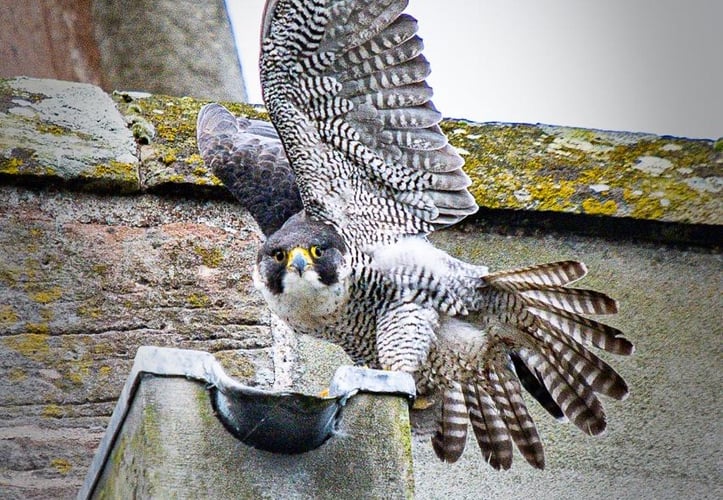THE more eagle-eyed dog walkers and other people who are around early in the day, have been noticing for some months that St Mary’s church tower in Ross-on-Wye has been adopted by a peregrine falcon.
And those who sit outside the Man of Ross, will have seen a pair of peregrine falcons flying around. The birds of prey were first spotted during the church’s Hedgehog Fayre in July.
Mark Sanderson, a churchwarden at St Mary’s Church said the arrival of at least one peregrine falcon was great news and added: “With the aid of a generous grant from Ross-on-Wye Town Council, we have had a ‘nesting’ tray, made and installed by a local volunteer.
“This has now made it possible to make the space on the church roof more hospitable for the birds in the hope that we’ll have a breeding pair in March.”
A few weeks ago, volunteers rigged up a rope and pully system to hoist the nesting tray to the roof of the church and installed it.
Peregrine falcons’ nest in a wide range of places including cliffs, buildings and other structures, mainly tall buildings that they adapted to lay their eggs.
“We’re in the process of installing cameras at the base of the spire so that we can all monitor their activity,” concluded Mr Sanderson.
The peregrine is a large and powerful falcon with broad, pointed wings and a relatively short tail. The breed were at a low point in the 1960s due to human persecution and the impact of pesticides in the food chain. Improved legislation and protection has helped the birds to recover and they have now expanded into many urban areas.

To learn more about what’s going on with the peregrines in Ross, a specialist talk is being held at St Mary’s Church on Wednesday November 27, at 7pm when Dr Richard Sale and Steve Watson, both of the Gloucestershire Raptor Monitoring Group will lead a talk on the subject.
There’s an £8 admission charge on the night. Richard and Steve are both co-authors of a newly published book, ‘The Peregrine Falcon’ which will be on sale on the night.




.jpeg?width=209&height=140&crop=209:145,smart&quality=75)